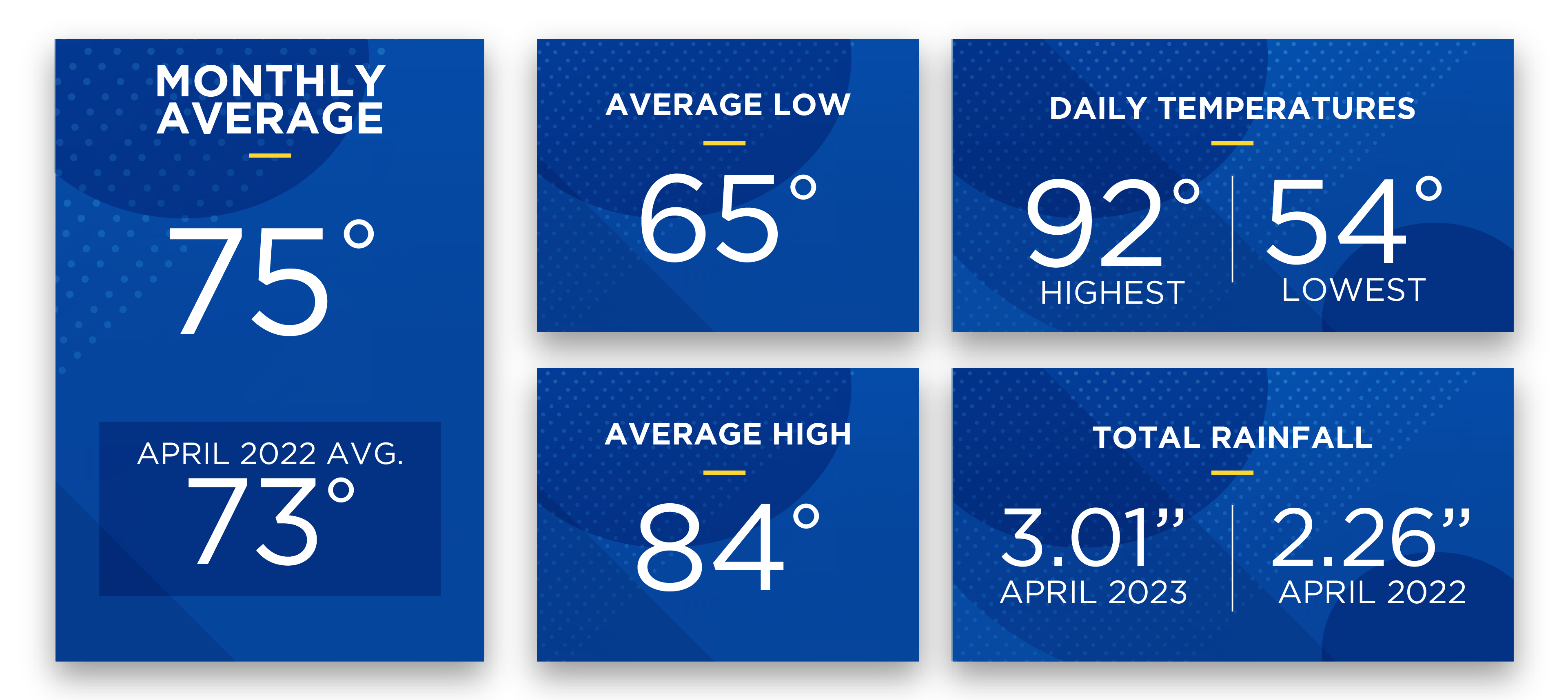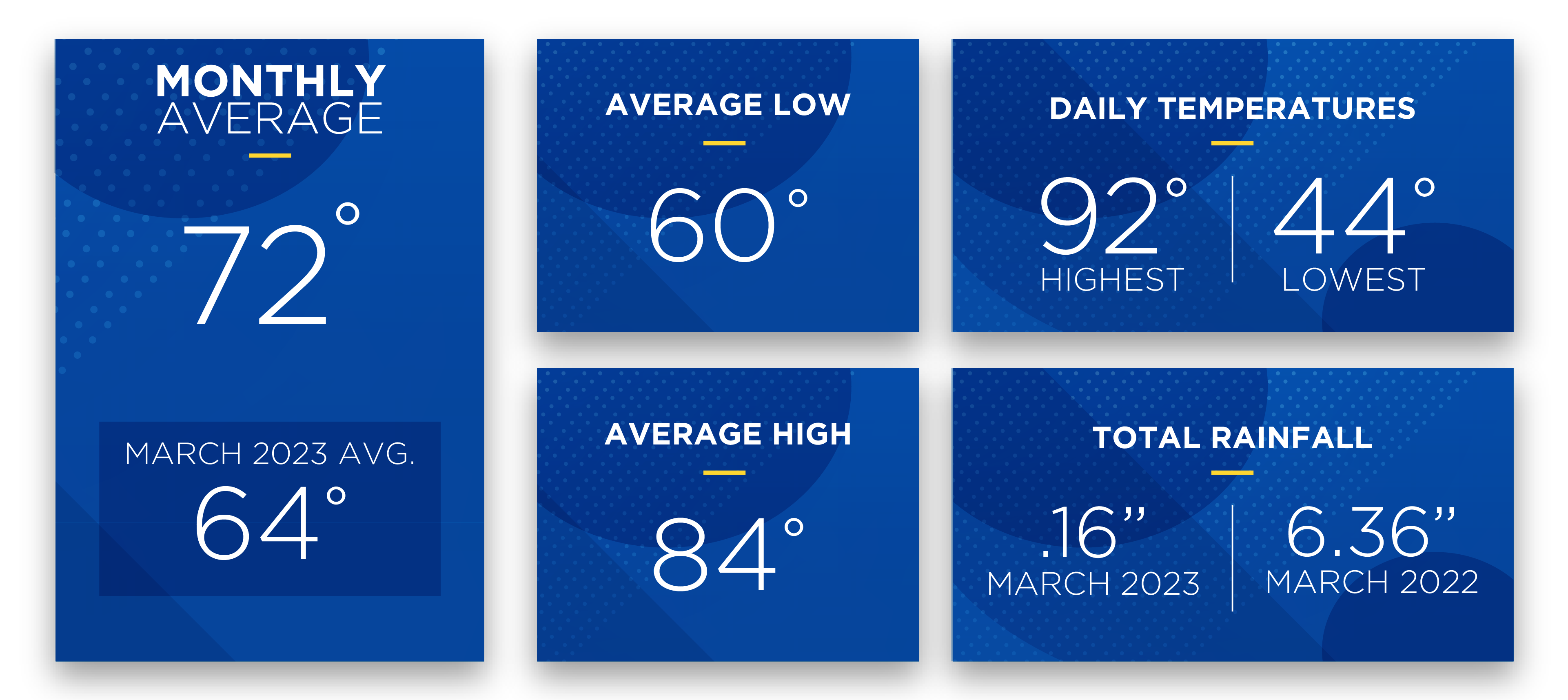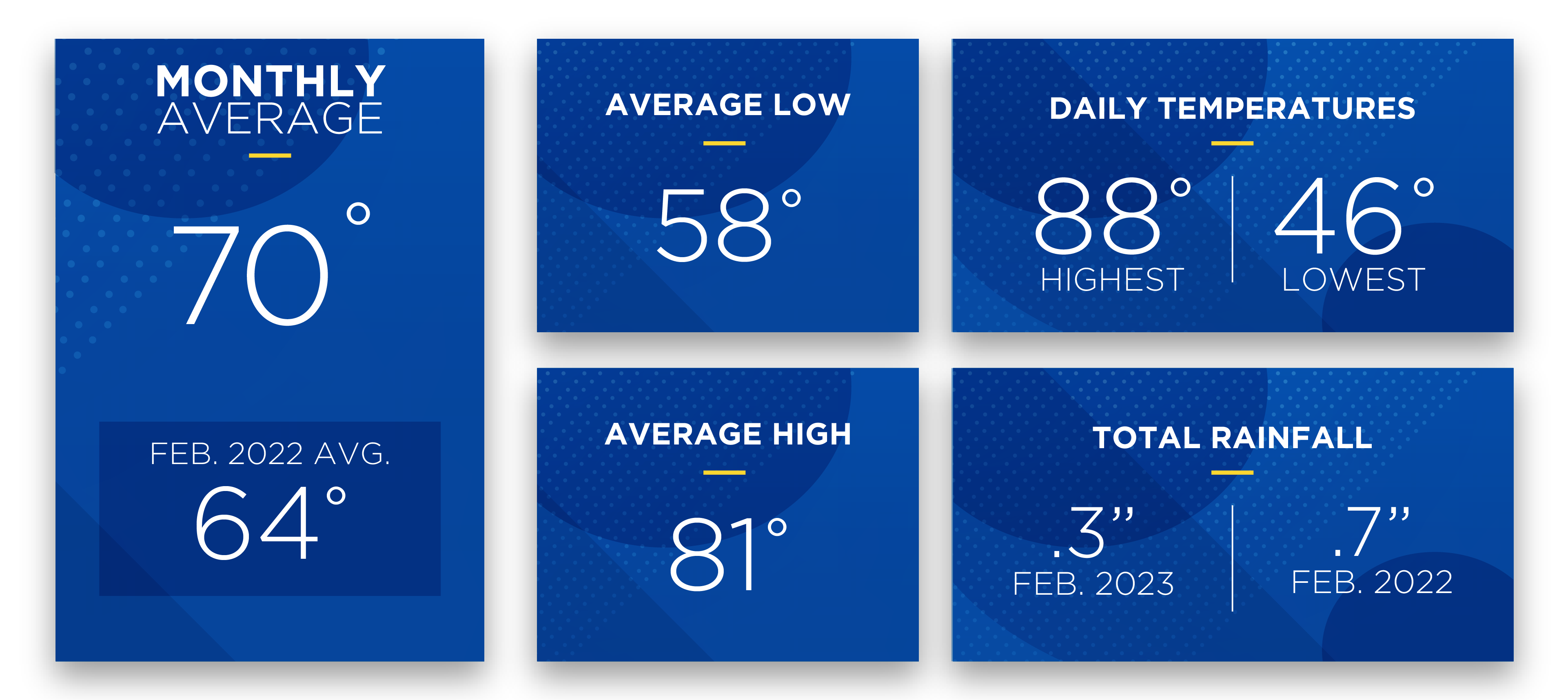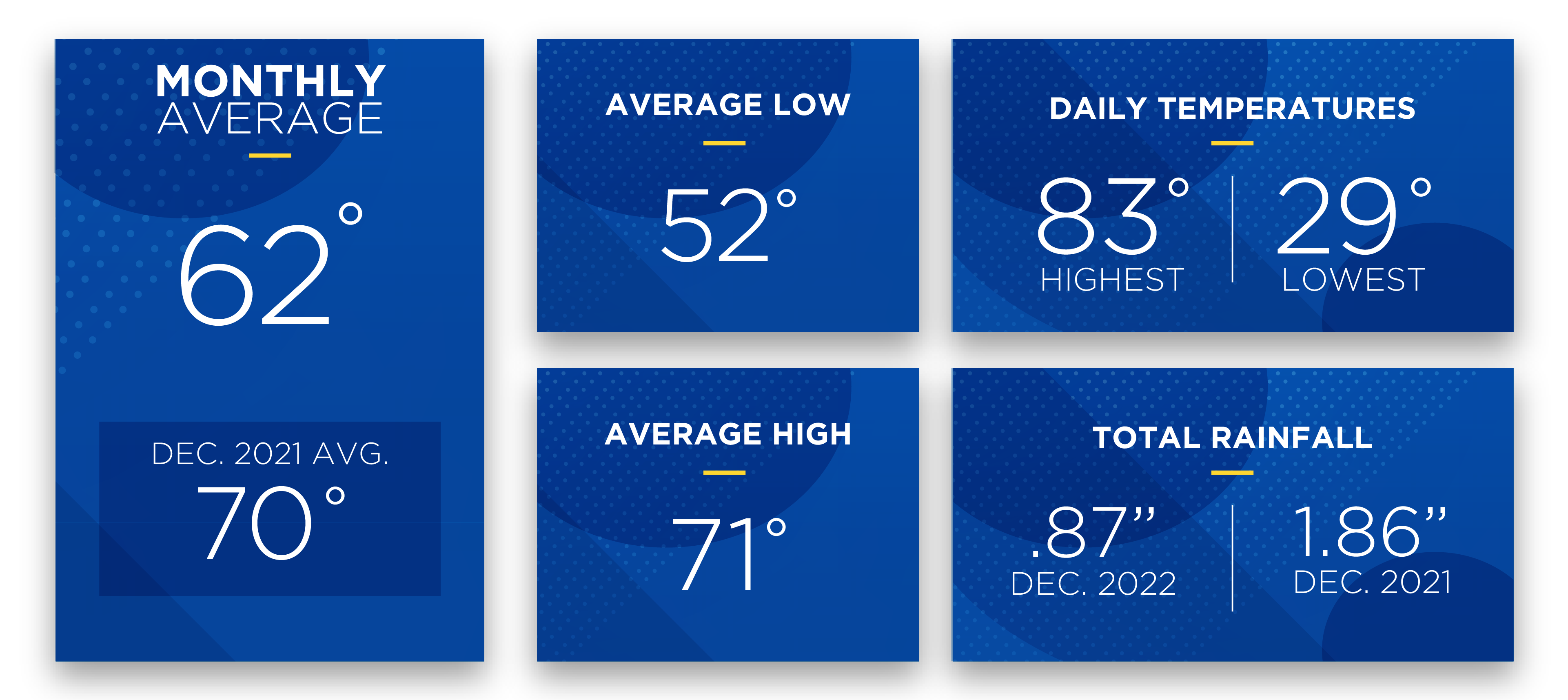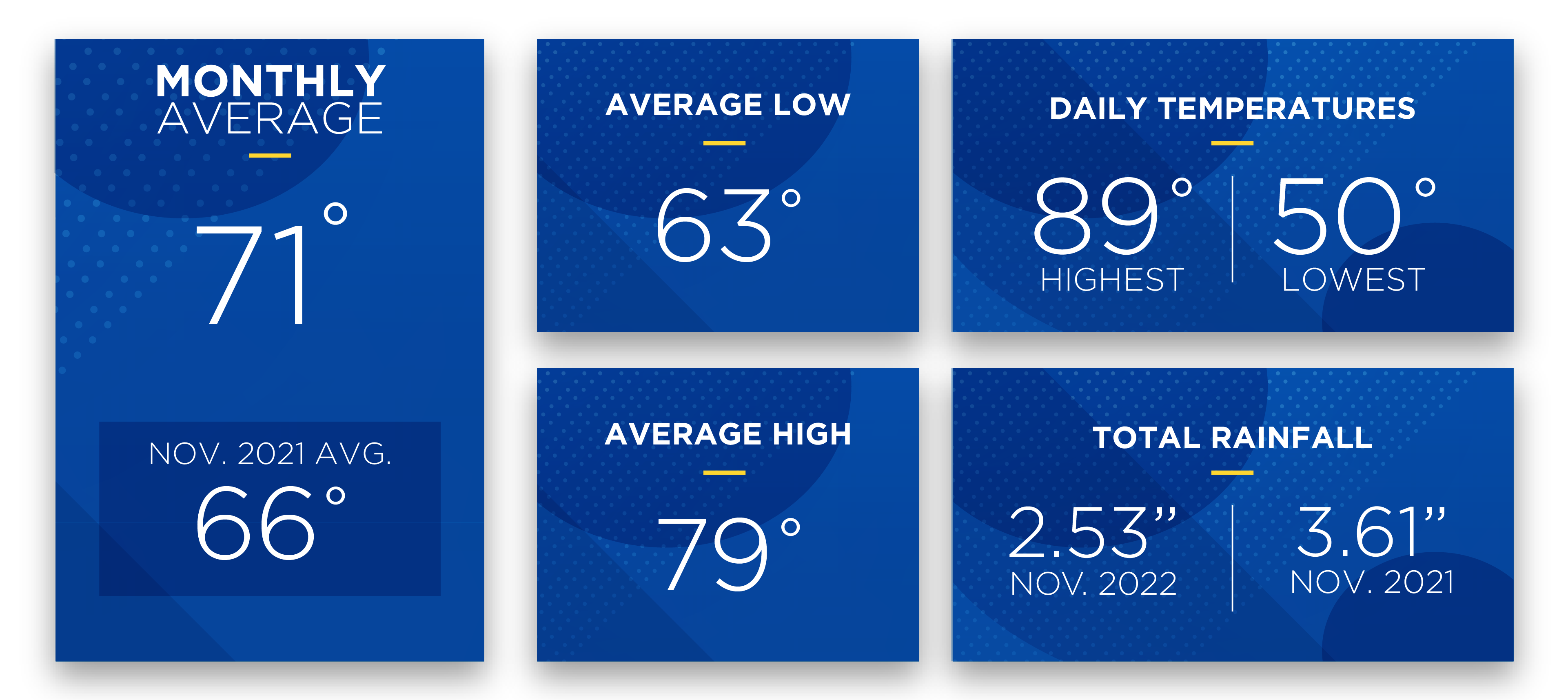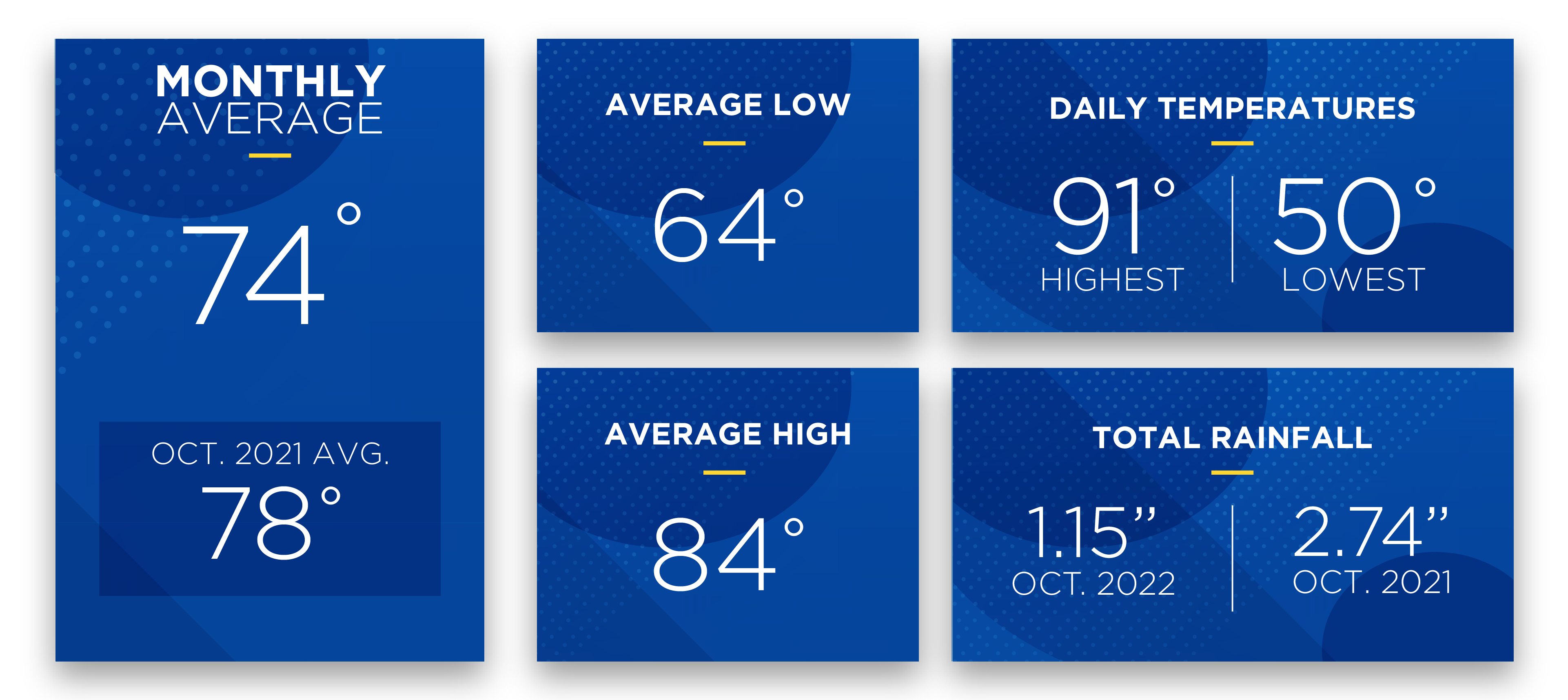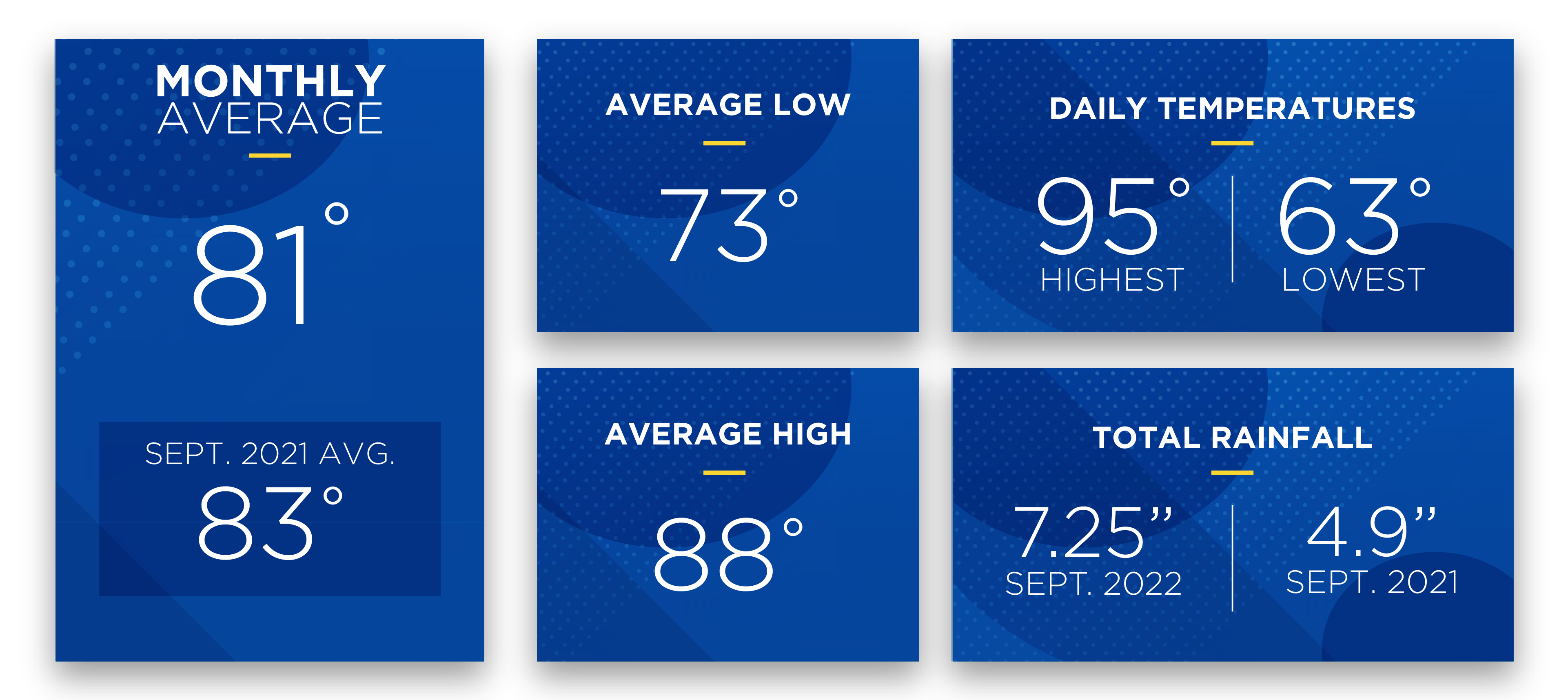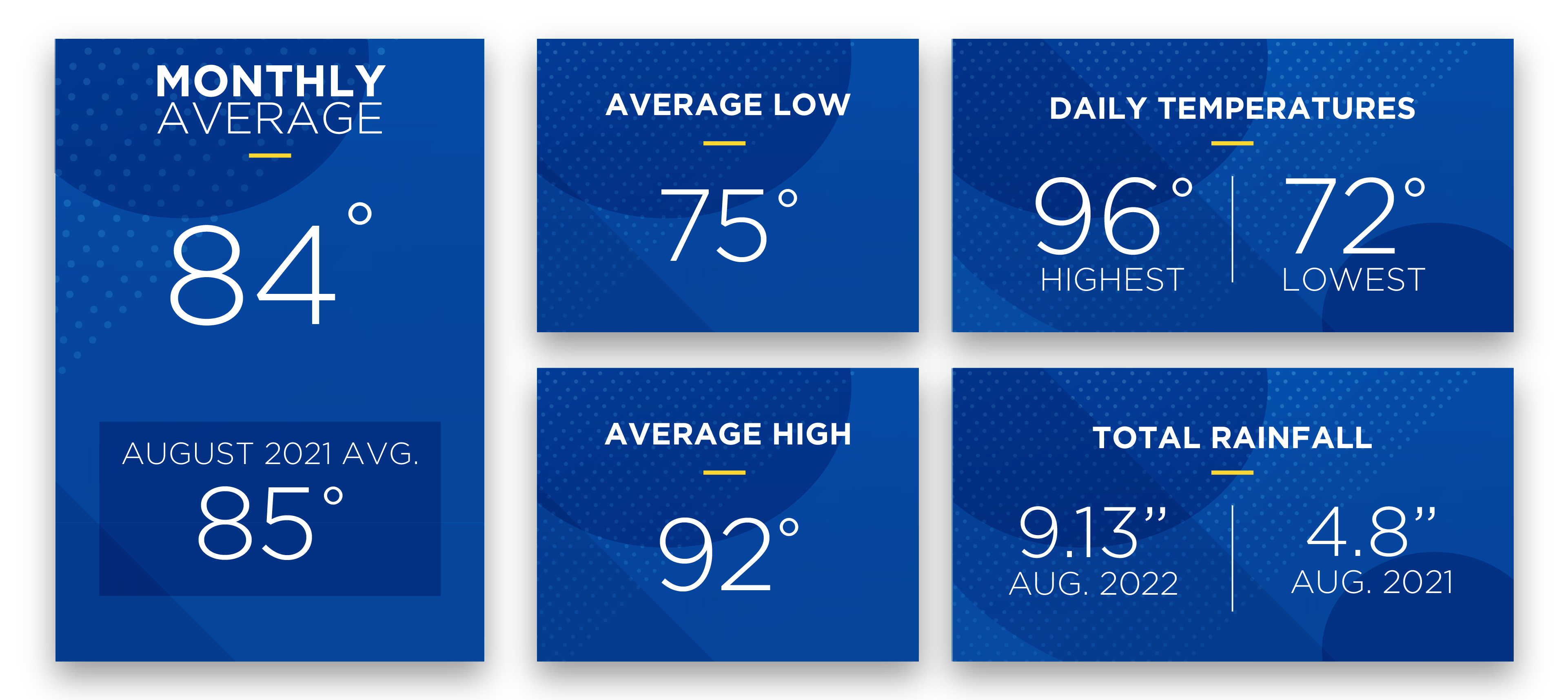May 2023 Sunshine State Stats
In May 2023, both the average temperature and rainfall increased slightly over April’s total. May continued the expected trend toward typical Florida summer weather – afternoon thunderstorms increased, and we saw our first glimpses of storm activity in the tropics. No single day contributed a low temperature below the 60-degree mark, while eight days pushed the mercury higher than 90 degrees in what was a generally warm month in Central Florida.

The average temperature for May 2023 was 76 degrees, which was 1 degree higher than last month’s average. The average high was 86 degrees, while the average low was 68 degrees. With steady temperatures in the warm to hot range, members will likely notice increased kilowatt-hour (kWh) usage as they begin to increase their HVAC use to combat rising summer temperatures. HVAC is the largest energy user in Central Florida homes – accounting for 35 to 40% of kWh usage on average.
The highest daily recorded temperature (data from the Leesburg KLEE weather station) in May was 93 degrees and the lowest was 60 – the highest daily recorded temperature in April was 92 degrees and the lowest was 54. May 2023 rainfall totaled about 3.5 inches – precipitation was more active in the second two weeks.
June forecast:
Look for isolated showers and a few thunderstorms as Florida’s rainy afternoons begin. Temperatures are forecast to climb into the 90s most days and drop into the low 70s in the evenings.
Atlantic hurricane season spans June 1 to November 30. Keep your eyes on the tropics for early signs of disturbances that could strengthen and impact Florida. Now is the time to gather your hurricane/emergency supplies. Review our Hurricane Handbook for a list of supplies, and what actions to take before, during and after a storm. Remember, supplies sell out quickly once a storm is forecast to affect our area.
To check historical usage, log into SmartHub to view past bills and consumption charts. If your usage is high, SECO offers several energy-efficiency tools to help you identify energy wasters. Take the Home Energy Assessment to receive a detailed email tailored to your home’s features and lifestyle. The energy-saving advice will provide low-cost ways to decrease your usage – and your electric bill.
To easily calculate how much energy your appliances, lighting, electronic devices, and other energy-using items in your home consume, use the Energy Estimator.





